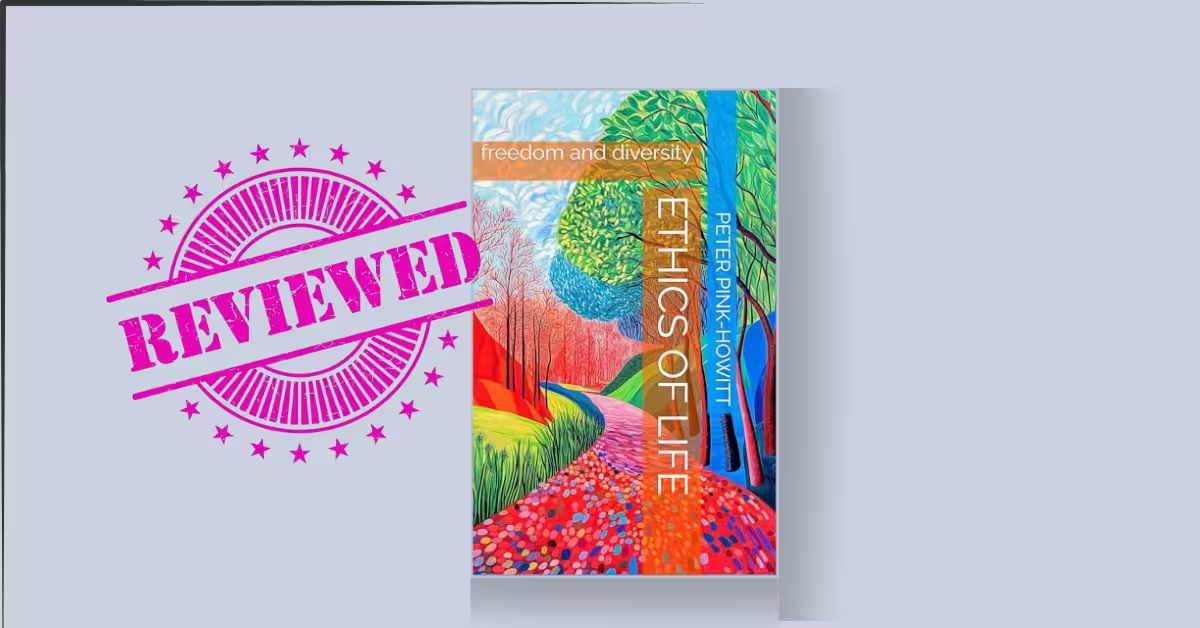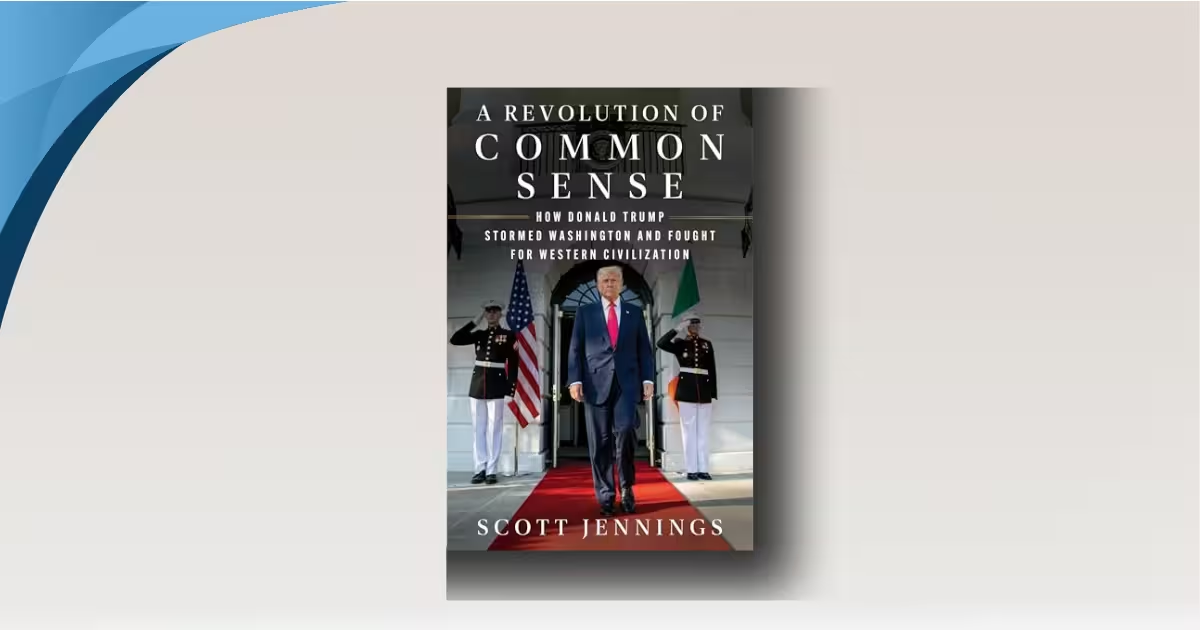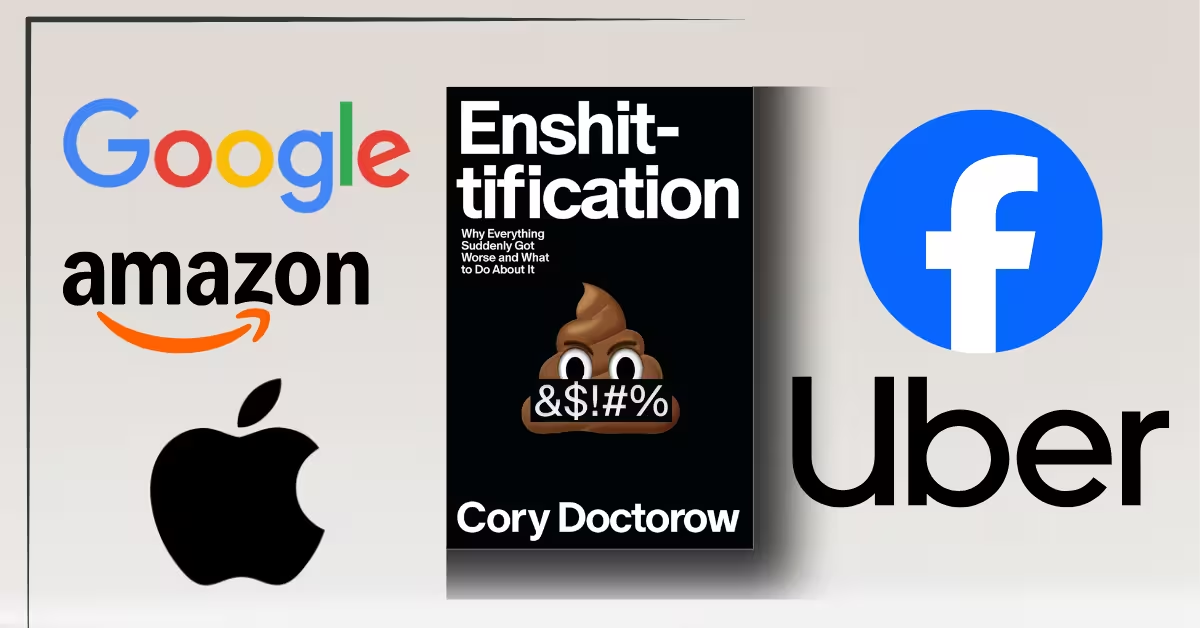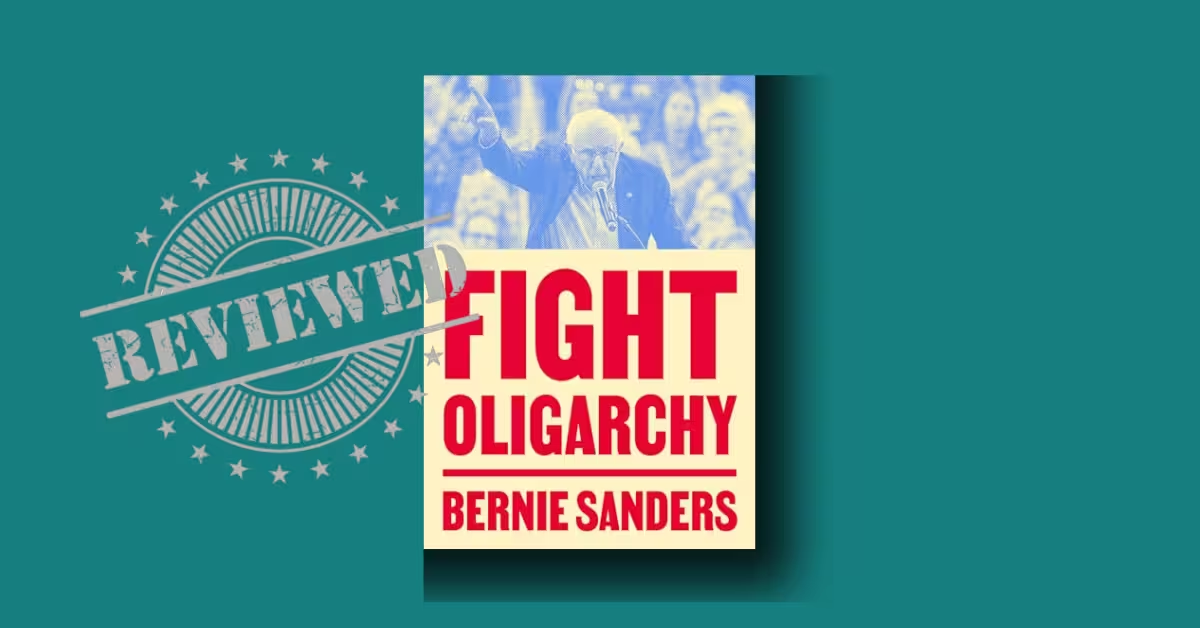Ethics of Life: freedom & diversity is a sweeping, idea-dense work that asks a deceptively simple question with enormous consequences for policy, technology, biodiversity, and everyday conduct: how should we build an ethics that keeps life flourishing while preserving freedom and diversity?
The keyword at the heart of the book—Ethics of Life—is paired with two operational pillars, freedom and diversity, that together propose a practical framework for decision-making across species, cultures, and future AI systems. As I read, I found the author arguing—again and again, and with uncommon clarity—that a consensus engine rooted in empirically testable axioms can help societies and institutions choose actions that maximize the compossible freedom of action and protect the maximal diversity of life-forms.
That is the book’s big bet, and it’s why Ethics of Life: freedom & diversity should matter to ethicists, technologists, conservationists, policymakers, and anyone who suspects that values must stretch as life diversifies.
We keep making decisions that shrink the living world and close down the space of future possibilities—this book shows how to do the opposite.
By building ethics around life, freedom, and diversity, Peter Pink-Howitt offers a way to navigate AI (Artificial Intelligence), climate risk, and cross-species claims without succumbing to dogma.
An ethics that works must balance the freedom of action of individual life-forms with the diversity of life-forms and species—using a transparent, evidence-auditable process (“consensus engine”) to reach utility-optimal decisions across stakeholders.
Evidence snapshot
- The book codifies empirical axioms: “Diversity of life-forms and species provides the greater chance for the successful continuation of life and enables greater freedom of action,” and “Use of a consensus engine… will tend to lead to more objectively justifiable decisions.”
- It links biodiversity finance to concrete policy tools—e.g., the TNFD (Taskforce on Nature-related Financial Disclosures) and energy-system trade-offs including nuclear’s decarbonization role (IEA/IPCC).
- External science converges: the UN/IPBES warns “around 1 million animal and plant species are now threatened with extinction, many within decades,” while WWF’s Living Planet Report reports an average 73% decline in monitored wildlife populations since 1970—underscoring the book’s urgency.
Best for: Readers who want a workable ethics for plural worlds—environmental and AI policymakers, DAO designers, corporate sustainability teams implementing TNFD, ethicists, philosophers of science, and curious generalists who value evidence, pluralism, and humility.
Not for: Those seeking a short polemic, a single-species moral theory, or a purely academic treatise; the book is long, interdisciplinary, and deliberately empirical-procedural rather than absolutist.
Table of Contents
1. Introduction
Ethics of Life: freedom & diversity by Peter Pink-Howitt (first edition 2022; updated digital editions 2025) is a cross-genre synthesis of philosophy, science writing, environmental ethics, and governance design.
The author frames ethics as an engineering problem for living systems, insisting that values be testable against life’s continuation, freedom, and diversity. He argues for a practical consensus engine where diverse stakeholders weigh evidence and make decisions that increase aggregate freedom and biodiversity rather than inadvertently eroding them. This emphasis is explicit in the axioms: “Ethical wisdom always involves seeking… an appropriate balance between the necessity for freedom of action with the necessity of a diversity of life-forms.”
Genre-wise, the book blends analytic argument with quotations and even brief poems and images, aiming for accessibility without sacrificing depth. Its author background—law and corporate advisory work—explains the procedural precision and governance focus.
Purpose of the book is to specify an empirical, evolvable ethical framework that any mixed community (human, cross-cultural, cross-species, or human-AI) can adopt to make “utility-optimal” decisions that preserve life, freedom, diversity.
This framework favors transparent axioms, regular review, strong consensus thresholds for foundational changes, and inclusive stakeholder processes.
Practically, the author asks us to treat “life” as the only universal invariant good, and then to measure and manage conflicts between freedom of action (for individuals and species) and diversity (at ecosystem and planetary scales). He insists that a well-specified consensus process will often outperform top-down edicts or laissez-faire neglect because it crowds in information, tests assumptions, and reduces capture by narrow interests. He warns of “capture of ethical infrastructure by a small group… with strong interest in securing outcomes that benefit them most,” making decentralized, auditable processes a guardrail.
He aligns with philosophy of computation by noting we cannot “build a self-completing algorithm that could compute an ethical conclusion”—hence the need for human wisdom, compassion, and continual review under uncertainty. The tone is ambitious yet sober, reflective about limits (Gödel, Turing) while remaining practical about governance.
As a reader, I appreciated how the book refuses the binary of either pure subjectivism or brittle universalism. It offers procedural universality—a way to decide fairly even when metaphysical agreement is impossible.
In short: a blueprint for ethics that scales with life.
2. Background
Although the book stands on its own, it knowingly sits in conversation with contemporary biodiversity and AI governance.
The UN/IPBES’s landmark assessment warns that roughly 1 million species face extinction “many within decades,” a statistic Pink-Howitt references to justify urgency. The WWF Living Planet Reports (most recently noting an average 73% decline in monitored vertebrate populations since 1970) illustrate the trajectory that a freedom-and-diversity ethics is meant to reverse. Financial markets are catching up: the TNFD has now published recommendations to integrate nature-related risk into finance, echoing the book’s call to price externalities and shift capital toward “nature-positive” outcomes.
You’ll also encounter allusions to classic philosophy and computation—Hume’s is-ought gap, Gödel’s incompleteness, Turing’s halting problem—used to motivate ethical humility and iterative design. The point: any fixed, final moral algorithm will fail; ethics must be empirical, revisable, plural.
A side note for context: among economic thinkers in this neighborhood, related debates about growth and innovation (e.g., Aghion’s creative destruction) loom—important when ethics meets policy.
But Pink-Howitt’s contribution is orthogonal: not “how economies grow,” but “how life keeps open the possibility to grow in many directions.”
The author’s legal and advisory background shows up in governance mechanics: a community should specify indexing and weighting, involve diverse stakeholders, and set consensus thresholds (e.g., 99% to amend foundation laws, >75% for major decisions). He argues non-communicative sapients (e.g., potential AI or non-human intelligence) must still be accounted for in decision payoffs—a striking inclusion. The book also anticipates “ethical capture,” urging decentralised information verification to resist “the tyranny of privately controlled mass media and authoritarian states.” Finally, he leans on compassion as the human fuel that keeps the engine humane when trade-offs bite. These operational details lift the project from abstraction into practice.
If you work in climate, AI safety, biotech, or conservation finance, you’ll recognise your daily dilemmas in these mechanics. The book is, at core, a design spec for multi-species, multi-stakeholder ethics.
And that makes it unusually useful.
3. Ethics of Life Summary
Pink-Howitt proposes a two-part structure: General Axioms of Life and Action, then Ethical Axioms and Laws that guide decisions toward utility-optimal outcomes while preserving freedom and diversity.
At the heart is an insistence that freedom of action be treated as an objective, measurable property—“a measure of distance from the normal behaviour of the surrounding population of life-forms”—while acknowledging that “free will is not a meaningful property that can be measured.” By measuring positive deviancy—unusual actions that expand the option space—societies can reward novelty without sacrificing coordination. The calculus is never purely individual; ethics must assess aggregate freedom alongside species-level diversity.
To prevent drift into subjectivism, the book anchors actions to life’s continuation: actions increasing diversity and freedom of action are “in principle invariantly good”; actions reducing them are “in principle invariantly not good.” Decisions must be justified in terms of explicit benefit-harm payoffs across all affected life-forms, including potentially sapient but non-communicative beings.
Because no ethical framework gets full agreement, the author specifies review cycles, consensus thresholds, and transparent recording of assumptions and uncertainties.
He also foregrounds error-mitigation, warning against central points of failure and infrastructure capture by narrow interests—an argument for decentralised, auditable governance.
On energy and biodiversity, the text surveys trade-offs candidly, citing IEA/IPCC analyses that decarbonization pathways likely require a larger nuclear share: “meeting the goal of 2°C will require doubling nuclear power’s contribution… the IPCC reached a similar conclusion,” layered with context on uranium energy density and avoided CO₂. The author does not evangelise; he demands utility-optimal comparisons across options and calls dogmatism a risk to species protection. He links the ethics to finance via biodiversity-finance literature and the TNFD—a route to shift capital away from nature-negative outcomes.
On knowledge and limits, he invokes Einstein, Gödel, and Turing to argue that logic can’t finish ethics for us; thus, humility and negative capability matter. On culture and narrative, scattered poems and quotations aim to keep readers grounded in the felt stakes of living systems.
Perhaps the most succinct crystallization reads like a charter: “The framework is based on the universal value of life itself and aims to support the greatest prospects of success of life as manifested in its various life-forms and species.” Pair that with the operational axiom: “Use of a consensus engine… will tend to lead to more objectively justifiable decisions.”
Taken together, this is both a moral stance and a governance method.
Ethics of Life takeaways
- Invariant commitment: Life is an invariant good. Protecting life, freedom, and diversity is universally justifiable—even across cultures or species.
- Measurable freedom: Treat freedom of action as an objective, population-relative metric; reward positive deviancy that expands option space.
- Consensus engine: Decisions require explicit scoring, stakeholder diversity, and transparent assumptions; escalate the consensus threshold with the gravity of the decision (e.g., 99% for foundational changes).
- Evidence humility: No algorithm completes ethics; therefore, update laws iteratively, with compassion and negative capability.
- Biodiversity finance: Link decisions to TNFD and capital flows; count externalities properly; compare energy pathways rigorously (including nuclear).
- Cultural frame: Ethics should be legible and motivating; literature and images remind us we’re protecting living value, not abstractions.
3. Ethics of Life analysis
Does the author support his claims with evidence and clear reasoning?
Yes—first by defining measurable constructs (freedom of action as a population-relative metric), second by linking axioms to decision procedure (scoring, consensus thresholds, explicit payoffs), and third by situating the framework in real-world policy debates (biodiversity finance, energy mixes). The argument is strengthened by recognizing computational and epistemic limits (Gödel/Turing), which immunizes the project against the hubris that sinks many universalist systems. The work invites contestation not by defending every premise as absolute, but by proposing how to disagree productively—procedurally, with evidence.
Where the reasoning feels strongest is in conflict management: the book anticipates perverse incentives and infrastructures of capture, then designs around them (distributed information, high thresholds for irreversible changes). Where it feels most ambitious is the cross-species aggregation of payoffs; the author acknowledges the difficulties yet insists the alternative—ignoring non-human value—is worse.
Crucially, the invariance claims (life is good; more compossible freedom and diversity is good) are pragmatic universals, not metaphysical dogmas.
They function like guardrails that keep political argument productive while leaving room for plural ends.
You might ask: can we really measure freedom of action? The author’s answer—measuring deviation from population norms—won’t satisfy every philosopher, but it’s operational, which is priceless in governance. Shouldn’t we worry about utilitarian aggregation across sentient and non-sentient beings? The book’s reply is to record assumptions, index uncertainties, and update weights as evidence changes—an engineer’s realism. And on decarbonization, the willingness to include nuclear based on IEA/IPCC evidence is exactly the kind of evidence-over-ideology move a consensus engine should value. Finally, by invoking the UN/IPBES and WWF Living Planet trends, the book shows that doing nothing also chooses: it chooses a world with fewer species and fewer futures.
In other words, the author doesn’t pretend ethics will be simple; he simply refuses the false comfort of principles that can’t be implemented. That feels honest and, frankly, overdue.
And it’s the honesty that gives the framework traction.
4. Strengths and weaknesses
Strengths: scope, procedural clarity, empirical humility, and moral ambition tethered to governance mechanics.
I loved how the consensus engine flows from the axioms instead of being pasted on afterward; it’s the book’s beating heart. The insistence on indexing and weighting decisions—before acting—speaks the language of policy, not just philosophy. And the commitment to compassion keeps the framework humane whenever trade-offs cut into someone’s real life.
Weaknesses: breadth can dilute depth in places; the cross-species aggregation problem (how much weight to a river, a reef, a non-communicative sapient?) demands more methodological hand-holds. And the language of “utility-optimal” can feel technocratic to lay readers even when the author’s intent is plainly humane.
Still, the book’s architecture is sound enough that others can fill in the measurement-science gaps.
That’s a feature, not a bug, when you’re building world-spanning ethics.
On style, I found the interleaving of poetry, philosophy, and policy refreshing; it keeps the stakes alive—these are living systems, not spreadsheet cells. The author’s meditation on whales, sharks, and long-lived species broadens the time horizon we typically use for ethics, which helped me feel the argument rather than only analyze it. When he says “We cannot build a self-completing algorithm that could compute an ethical conclusion,” I felt relief—the work of judgment remains human, dialogic, iterative. The chapter-level asides on positive deviancy and spacefaring as life’s greatest freedom of action so far were inspiring, re-centering freedom as a species-level property, not a mere individual right. If ethics should motivate, this book motivates.
I did wish for a more concrete playbook for organizations to pilot the consensus engine in six months or less—though the ingredients are here. In practice, it will take a small lab or city to show how it all fits.
And that’s a challenge worth taking up.
5. Reception, criticism, and influence
Because the book straddles philosophy, policy, and governance, its reception is still forming.
The 2022 edition (Google Books) establishes the core framework; the 2025 digital release signals ongoing iteration and a growing audience. Early catalog listings emphasize its AI and biodiversity relevance; my sense is the TNFD and similar initiatives will make this text more practical as firms seek decision recipes that integrate nature. Reasonable critics will press the aggregation problem and the risk of technocratic language—critiques the author anticipates by baking periodic review and compassion into the framework.
In media and civil society, the drumbeat of biodiversity decline data (UN/IPBES; WWF) will likely make this work feel less speculative and more necessary. And AI governance circles—hungry for plural yet actionable ethics—will recognize a cousin to safety “evals” and red-team processes.
Expect to hear more about consensus engines and “compossible freedom” in AI, climate, and city governance pilots over the next few years.
6. Comparison with similar works
Two families of comparison help frame this book: universalist ethics (seeking timeless principles) and governance-procedural ethics (seeking fair decision processes).
Unlike strict deontology or simple utilitarianism, Ethics of Life treats “life, freedom, diversity” as guardrail invariants, then insists everything else be tested empirically—closer to Deweyan pragmatism or contemporary proceduralism. Compared with Asimov-style rule ethics for AI, this book rejects brittle laws in favor of consensus with evidence checkpoints and compassion—more like a cross between civic republicanism and Bayesian governance. And compared with purely conservationist texts, it blends finance and technology—TNFD, energy systems—so the ethics can travel from page to policy.
If you appreciate the empirical spirit of environmental economics but want a larger moral horizon, this book feels like the missing bridge. If you work in AI safety and want values that scale beyond humans, this is oxygen.
It’s a synthesis, not a silo.
7. Best passages
- “Ethical wisdom always involves seeking to help achieve… an appropriate balance between the necessity for freedom of action with the necessity of a diversity of life-forms.”
- “Use of a consensus engine with the widest relevant group of stakeholders… will tend to lead to more objectively justifiable decisions.”
- “Freedom of action… is a measurable objective property… [as] distance from the normal behaviour of the surrounding population.”
- “We cannot build a self-completing algorithm that could compute an ethical conclusion… The point is to build a better, safer architecture… to make decisions by consensus (‘Consensus Engine’).”
- On governance capture risks: consensus mechanisms are needed given the “expected capture of ethical infrastructure by a small group… with strong interest in securing outcomes that benefit them most.”
- On biodiversity and energy pragmatism (IEA/IPCC): “meeting the goal of 2 degrees C will require doubling nuclear power’s contribution… the IPCC reached a similar conclusion.”
8. Conclusion
Ethics of Life: freedom & diversity is a rare thing: a big-tent moral framework that refuses dogma yet still decides.
I recommend it to policymakers designing nature-positive strategies (especially those adopting TNFD), to AI governance teams wrestling with multi-stakeholder harm/benefit trade-offs, and to researchers and students in environmental ethics, philosophy of science, and technology policy.
General readers with patience for a long book will find it surprisingly accessible—thanks to its vivid examples, quotations, and the way it invites us to measure what really matters: preserving life’s future options. If you’re choosing one ethics book for the decade, choose the one that equips you to build processes and institutions that widen the space of possible lives.
I closed the book convinced that ethics is engineering for living systems—and that our job is to keep the option space open.
Related



